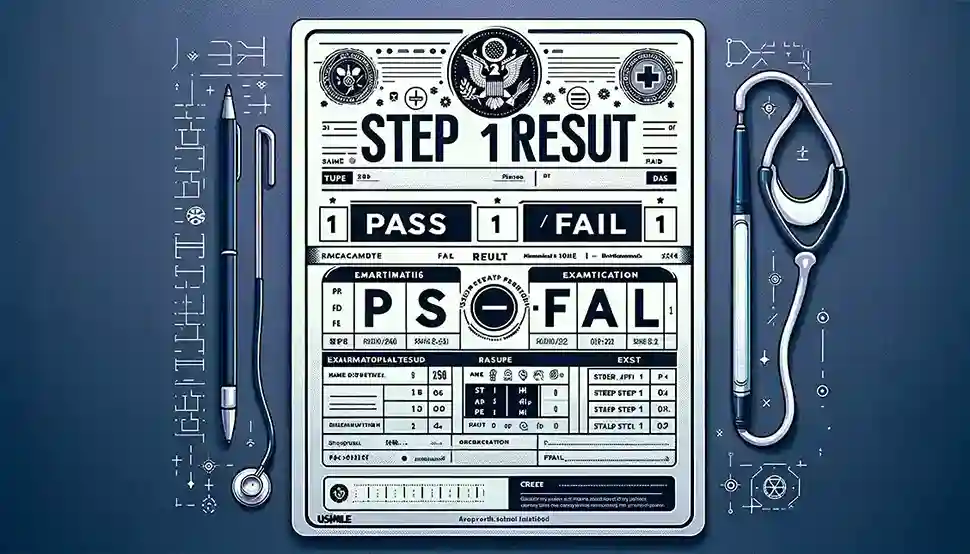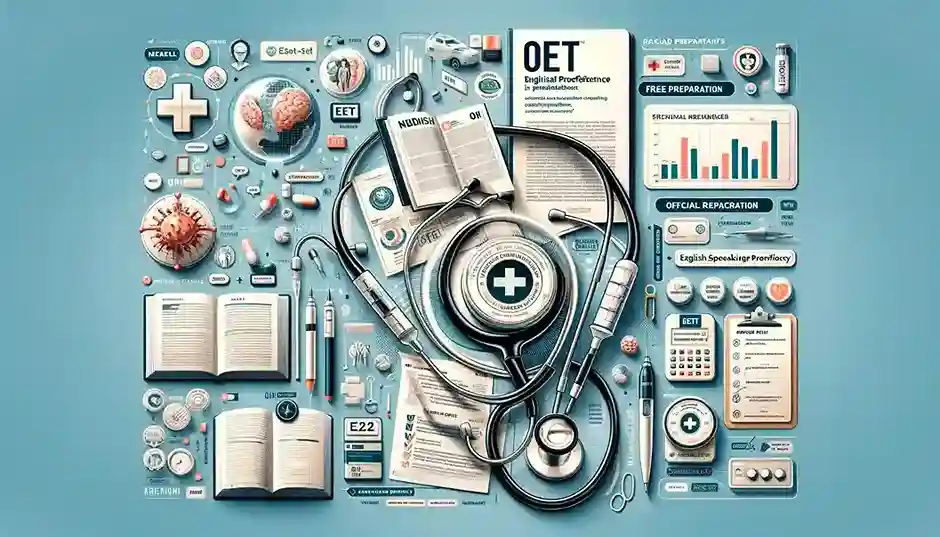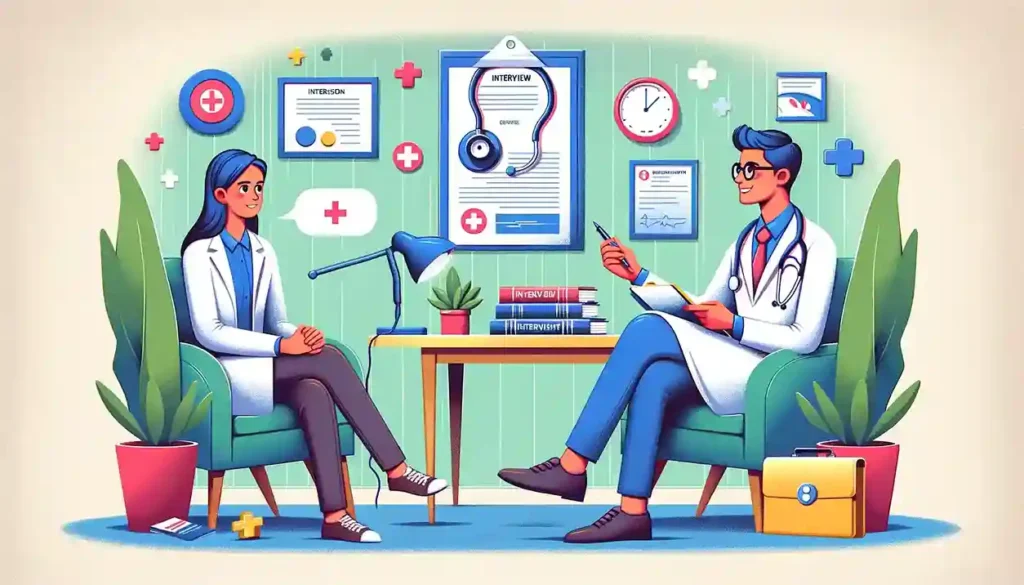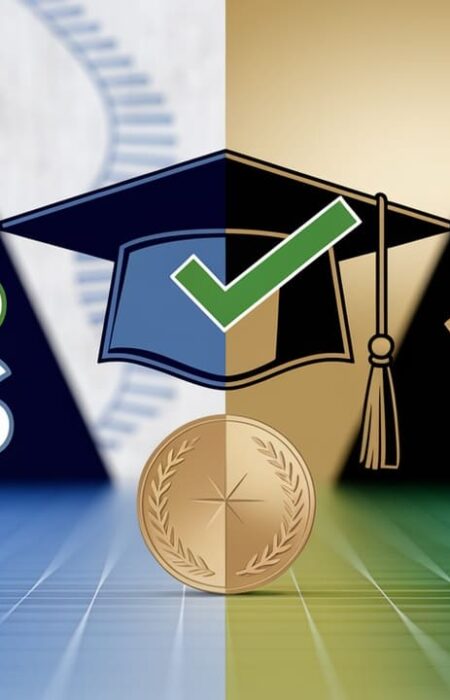What is the USMLE?
What Is The USMLE? The United States Medical Licensing Examination (USMLE) is a series of exams required of any aspiring US medical practitioner before becoming licensed to practice medicine here in America. You will give this exam after MBBS to apply for PG residency in the US.
Only those holding either an MBBS degree or equivalent undergraduate degrees can sit the USMLE exams, with this guide designed to break down its timeline from its first tests all the way through residency applications needed in order to practice in America.
| Exam Name | United States Medical Licensing Examination (USMLE) |
| Conducting Body | National Board of Medical Examiners (NBME) and the Federation of State Medical Boards (FSMB) |
| Exam Level | Postgraduate (PG) Exam at the International Level |
| Exam Mode | Computer-based Prometric exam |
| Courses Offered Through NEET UG | PG Courses and Specialisation in the United States- Residency |
| Exam Fees | Application Fees for Step 1- $985 Application Fees for Step 2 CK- $985 |
| Exam Duration | STEP 1- 280 MCQs on the 8-hour test, 7 blocks- 1 hour each STEP 2- 318 MCQs on the 9-hour test, 8 blocks- 1 hour each |
| Timing | Depends on the exam centre and the time they give you |
| Total Marks | STEP 1- 300 marks STEP 2- 300 marks |
| Total Questions | STEP 1- 280 MCQs STEP 2- 318 MCQs |
| Marking Scheme | 1 mark for each question No negative marking |
| Number of Exam Countries | Depends on the exam center and the time they give you. |
| Total Number of Seats | Different specialties have different numbers of seats for the IMGS. The top specialties in which IMG students match are- Internal Medicine, Family Medicine, Pathology, Paediatrics, etc |
| NEET Official Website | https://www.usmle.org |
USMLE Full Form and Meaning
USMLE stands for United States Medical Licensing Examination and serves as an individual licensing exam to give you the license to practice medicine in the US.
The United States Medical Licensing Examinations (USMLE) are administered jointly by two bodies- the National Board of Medical Examiners and the Federation of State Medical Boards.
Aspiring doctors must pass two major examinations – Step 1 and Step 2 CK Clinical Knowledge (CK).
Step 3 may not be required when applying to residency but could still completed one year after acceptance into a residency program.
Your English skills are also assessed using the Occupational English Test (OET). This exam is given after USMLE step 1.
Prometric Centre for USMLE Exam
Prometric test centers provide USMLE Step 1 and Step 2 exams worldwide. You can find over 150 centres can be found outside North America alone.
In India there are eight centres being located in major metro cities of India including Chennai, Hyderabad, Ahmedabad Bangalore Kolkata Allahabad Mumbai New Delhi where you may take these computer-based examinations administered by Prometric.
So basically Prometric is the company which has the responsibility to take USMLE and other exams worldwide.
Prometric is an international examination provider offering multiple medical licensing examinations such as USMLE worldwide.
If you are sitting for the Step 1 or Step 2 exams you do not physically need to travel to America but, rather, must find a Prometric center within their home country where they can sit the exam. However, you need to take Step 3 exam within America. Step 3 exam is taken within one year after starting residncy.
Importance of the USMLE for Medical Professionals
The USMLE plays an invaluable role in medical education as it serves as a standardized exam tool for those aspiring to licensure in the US. US medical body has very high standard. That’s why USMLE is an exam of good standard which tests your knowledge in depth.
It ensures that medical professionals possess both the knowledge and abilities needed to provide high-quality patient care, while a high score can enhance residency applications by increasing chances of selection by desirable residency programs.
Furthermore, passing the USMLE is mandatory for international medical graduates (IMGs) seeking certification by ECFMG (Educational Commission for Foreign Medical Graduates) before practicing medicine in America.
Read More: 10 tips to perform better in USMLE
What is ECFMG certification, and why is it important?
Educational Commission for Foreign Medical Graduates certification requires international medical graduates (IMGs) to meet its requirements before practicing medicine in the US.
Certification allows IMGs to participate in the National Resident Matching Program (NRMP), which matches residency programs with graduates; additionally, ECFMG ensures IMGs adhere to quality healthcare delivery systems within America.
What is the NBME and its role in the USMLE?
The National Board of Medical Examiners (NBME) manages and administers the USMLE examination, developing its content, standards, scoring methodologies, and scoring procedures to ensure validity and reliability and providing candidates with resources to prepare effectively for taking this examination.
What is Form 183, and what is its significance in the USMLE process?
Form 183 is an important document needed of IMGs applying to take part in USMLE examinations, submitted as part of their application to ECFMG for certification purposes and used to verify the candidate’s medical education information. Form 183 serves to confirm their eligibility to sit the USMLE exams as well as establish ECFMG membership certification status.
USMLE 2023 Results:
- The NBME electronically determines and releases score reports for all 2023 steps through ECFMG’s OASIS platform; no paper copies will be sent out for scoring purposes.
- Results should arrive between three to four weeks from your exam date.
- ECFMG notifies international students/graduates when Steps 1-2 CK reports are ready; FSMB handles notifications about Step 3.
- Scoring: Scores range from 0-300 on a three-digit scale. USMLE Step 1 score reporting has transitioned away from numeric scoring towards pass/fail only reporting as of January 26, 2022.
Step 1: The Foundation
Now, Step 1 used to be graded by numbers, but as of January 26, 2022, it is now graded as either pass or fail. The test measures pre-clinical information, which is very important for the first two years of medical school. There are 280 questions on the eight-hour test, which is broken up into seven one-hour blocks.
It usually takes five to seven months to get ready for the exam, and websites like Boards and Beyond, UWorld, First Aid, Pathoma, and Sketchy are very helpful.
Although Step I used to be graded numerically, starting January 26th 2022 it will now only be graded pass/fail for its examination measure. The exam measures your ability and aptitude.

Step 2 CK: Clinical Knowledge
Step 2 CK checks how well you can use what you know about medicine in real-life situations. And, It is still scored numerically, and this is a very important thing for the program head of residency programs. It is a nine hour test. There are 8 blocks with 40 questions each.
UWorld, Boards and Beyond are important resources. By using the resources, you can get ready in 4.5 months.
OET: Proving English Proficiency
The OET is a new test that is used to test English speaking skills in a medical exam. You can prepare quickly with the help of the free E2OET course and official OET sample questions.

ECFMG Certification
International medical school graduates need ECFMG certification to apply for residency programs through the National Resident Matching Program (NRMP). To do this, you need to pass USMLE Step 1, Step 2 CK, and the OET. And, you also need to send in your medical degree and a letter from your university saying you are in good status. This confirms that you are medical student from a good medical college.
The Match Process
Applicants rank the programs according to their liking. And, programs also rank applicants based on their preferences during the Match process. Now depedning on how both the ranks cross each other in terms of preference, you match into a residency.
The Electronic Residency Application Service (ERAS) application, which contains work, volunteer, and research experience, personal statements, letters of recommendation (LoRs), the Medical School Performance Evaluation (MSPE), and medical school transcripts are some of the things that are needed for a good match.
The Road to Residency: Interviews, Rank Order Lists, and Beyond
Interviews: A Critical Step
The interview season starts after you send in your ERAS application, which is usually around the middle of September.
Interviews are planned for October through January, and some will go into February. In the past, applicants had to fly to the programs for in-person meetings, such as dinners before the interviews and interviews that lasted all day. But recently, things have changed, and talks now take place online and last between four and six hours.
These interviews are very important because they test more than just medical information. They also test communication skills, professionalism, and moral reasoning. It gives schools a chance to learn more about you than just your grades and application.

The Rank Order List and Match Day
After interviews, applicants and programs send the National Resident Matching Program (NRMP) their Rank Order Lists, which show which programs they want to live in first. Based on these lists, the Match algorithm then matches applicants with schools.
The match results are released on a Monday in the third week of March.
They only say if applications have matched, not where. The exact program matches are made public the following Friday.
Applicants who were not matched can then apply to the Supplemental Offer and Acceptance Program (SOAP) to fill any open positions. The last hurdle on the USMLE is Step 3.
USMLE Step 3: The Final Hurdle
While not a prerequisite for residency, completing USMLE Step 3 can enhance an applicant’s profile. This two-day exam tests both foundational medical knowledge and clinical skills, including patient care and management scenarios. Most residents take Step 3 during their first or second year of residency, as some programs require passing it before advancing to the third year.
Reflecting on the Match Process
The journey through USMLE and matching into a residency program is filled with both challenges and opportunities. High scores and extensive U.S. clinical experience (USCE) can improve your chances, but they do not guarantee a match.
Personal statements, letters of recommendation (LORs), and the interview process play significant roles in the selection process. It underscores the importance of presenting a well-rounded application that showcases both your clinical competencies and personal attributes.
USMLE Exam Details: Retakes, Time Limits & Number of Attempts
USMLE applicants can only attempt a Step a maximum of four times. Attempts made in Step 2 CS are also included towards the limit.
The three attempts should be made within 12 months.
The fourth attempt should be at least 12 months after the first attempt at that examination. It should also be at least six months after the last examination attempt.
If the applicant passes the Step or Step Component, then there are no retakes for it, except for complying with the time limit given by the authority for US physician licensing. It means that all Steps are required for completion within this deadline.
The Financial Aspect
The financial investment in pursuing residency in the U.S. is considerable, with costs amounting to around $20,000. This includes exam fees, application costs, and potential travel for interviews. Being aware of these expenses and planning accordingly is crucial for prospective applicants.

Mastering USMLE Step 3 and Embracing the Match Journey
After conquering USMLE Step 1 and Step 2 CK, many candidates turn their attention to Step 3. This final hurdle in the USMLE series presents a two-day examination, focusing on your ability to apply medical knowledge in a real-world setting. The first day, known as the Foundations of Independent Practice (FIP), assesses your medical knowledge and understanding of basic sciences through a series of multiple-choice questions (MCQs). You can tackle this day with strategic breaks, optimizing your performance across six one-hour blocks of questions.
The second day of the exam, centered on Advanced Clinical Medicine (ACM), challenges your clinical skills with Computer-based Case Simulations (CCS). These simulations evaluate your decision-making in patient care, from history taking and physical examinations to managing patient care effectively. This portion not only tests your medical knowledge but also your ability to think on your feet, simulating real-life patient encounters.
USMLE Scoring System
Results are published online by the USMLE, and officials release scorecards with candidates’ marks. Authorities also inform all applicants about result availability. FSMB officials issue notifications when Step 3 results are published.
Electronic formats generate score reports, with results declared three weeks post-exam completion.
Candidates should get a “PASS” in Step 1 and 214 in Step 2 (CK). They should get at least 200 in Step 3. All these are updated passing marks as of 1st January 2024.
Strategies for Unmatched Applicants
The journey doesn’t end for those who find themselves unmatched. Many pursue research electives or additional clinical rotations, using this time to bolster their applications with new LoRs and experiences. This path underscores the resilience and determination required to navigate the competitive landscape of medical residencies in the U.S.
Conclusion
The path to practicing medicine in the U.S. through the USMLE and residency match is rigorous and demanding. It requires not just academic excellence but also resilience, adaptability, and a commitment to continuous improvement. Despite the challenges, the opportunity to train and work in the U.S. healthcare system is a rewarding journey for many international medical graduates. As you navigate this process, remember that preparation, persistence, and a positive outlook are your best allies.





